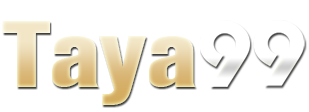JILIEVO Casino
rbet When I Became a Birder, Almost Everything Else Fell Into Place
2025-01-06

Last September, I drove to a protected wetland near my home in Oakland, Calif., walked to the end of a pier and started looking at birds. Throughout the summer, I was breaking in my first pair of binoculars, a Sibley field guide and the Merlin song-identification app, but always while hiking or walking the dog. On that pier, for the first time, I had gone somewhere solely to watch birds.
In some birding circles, people say that anyone who looks at birds is a birder — a kind, inclusive sentiment that overlooks the forces that create and shape subcultures. Anyone can dance, but not everyone would identify as a dancer, because the term suggests, if not skill, then at least effort and intent. Similarly, I’ve cared about birds and other animals for my entire life, and I’ve written about them throughout my two decades as a science writer, but I mark the moment when I specifically chose to devote time and energy to them as the moment I became a birder.
Recognizing the extraordinary dangers of a president seeking not just to weaponize the criminal justice system for political ends but trying as well to assume personal control over who should be investigated and charged, the White House counsel, Donald F. McGahn II, sought to stall.
Since then, my birder derangement syndrome has progressed at an alarming pace. Seven months ago, I was still seeing very common birds for the first time. Since then, I’ve seen 452 species, including 337 in the United States, and 307 this year alone. I can reliably identify a few dozen species by ear. I can tell apart greater and lesser yellowlegs, house and purple finches, Cooper’s and sharp-shinned hawks. (Don’t talk to me about gulls; I’m working on the gulls.) I keep abreast of eBird’s rare bird alerts and have spent many days — some glorious, others frustrating — looking for said rare birds. I know what it means to dip, to twitch, to pish. I’ve gone owling.
I didn’t start from scratch. A career spent writing about nature gave me enough avian biology and taxonomy to roughly know the habitats and silhouettes of the major groups. Journalism taught me how to familiarize myself with unfamiliar territory very quickly. I crowdsourced tips on the social media platform Bluesky. I went out with experienced birders to learn how they move through a landscape and what cues they attend to.
I studied up on birds that are famously difficult to identify so that when I first saw them in the field, I had an inkling of what they were without having to check a field guide. I used the many tools now available to novices: EBird shows where other birders go and reveals how different species navigate space and time; Merlin is best known as an identification app but is secretly an incredible encyclopedia; Birding Quiz lets you practice identifying species based on fleeting glances at bad angles.
This all sounds rather extra, and birding is often defined by its excesses. At its worst, it becomes an empty process of collection that turns living things into abstract numbers on meaningless lists. But even that style of birding is harder without knowledge. To find the birds, you have to know them. And in the process of knowing them, much else falls into place.
We are having trouble retrieving the article content.
Please enable JavaScript in your browser settings.
Thank you for your patience while we verify access. If you are in Reader mode please exit and log into your Times account, or subscribe for all of The Times.
Thank you for your patience while we verify access.
Already a subscriber? Log in.
afk77 slotWant all of The Times? Subscribe.rbet

